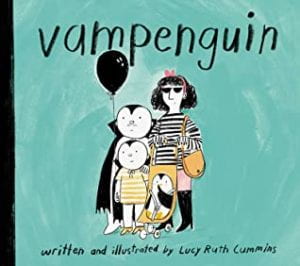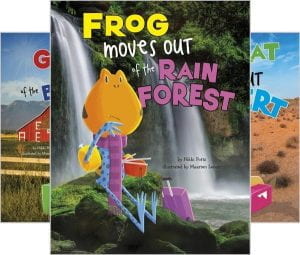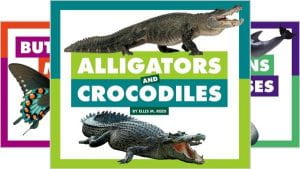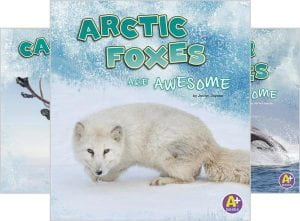 Cummins, Lucy Ruth. Vampenguin. Atheneum Books for Young Readers, 2021. 978-1-5344-6698-2 p. 48. $17.99. Grades K-3.
Cummins, Lucy Ruth. Vampenguin. Atheneum Books for Young Readers, 2021. 978-1-5344-6698-2 p. 48. $17.99. Grades K-3.
Adventurous young readers will love Lucy Ruth Cummin’s picture book, Vampenguin, about a vampire family that spends the day at the zoo. As the Vampire family visits each exhibit and examines all the exciting animals, baby Dracula seems VERY interested in the penguin exhibit. Likewise, a young penguin finds that the Vampire family may be his ticket out of the penguin exhibit to explore the zoo for the very first time. But, alas, this kind of mischief calls for the old switcheroo plan, and suddenly this Saturday adventure has become much more enjoyable. Baby Dracula quietly slips into the penguin’s house to spend the day swimming, eating, and hanging out with the other penguins. At the same time, the baby Penguin sneaks into the baby stroller to explore exhibits and animals at the zoo that he has never seen before. So while the zoo employees are busy with their chores and everyday activities, and the parents have their attention on other things, the babies (Dracula and Penguin) have the adventure of a lifetime pretending to be each other.
THOUGHTS: Lucy Ruth Cummins is the author and the illustrator of this story, and observant readers will giggle over the details not necessarily said in words but told within the art. This story is a case of mistaken identity, and the grown-up characters are none too wise! A picture book that is perfect as a read-aloud that will get a few laughs from the readers!
Picture Book Marie Mengel, Reading SD



